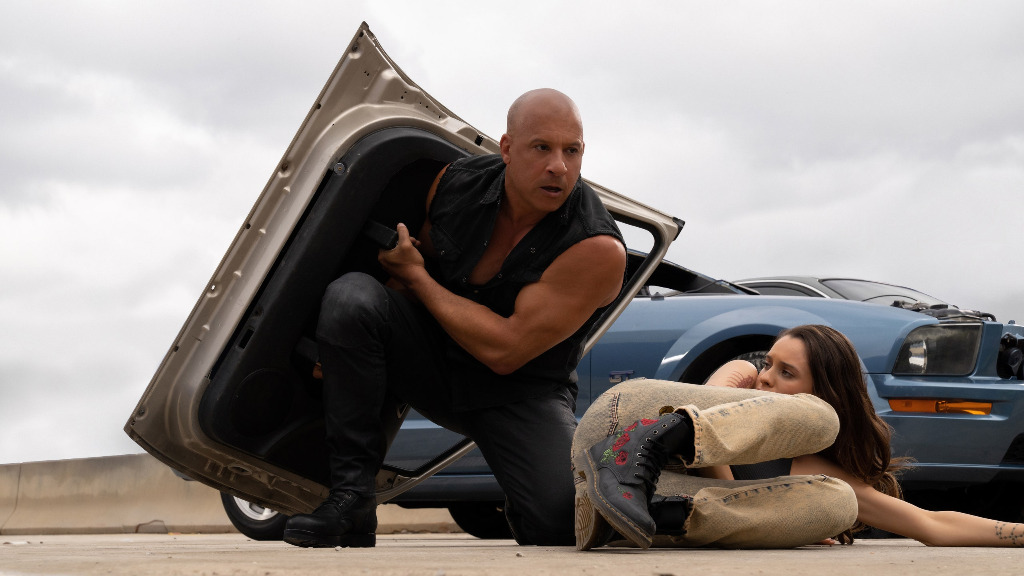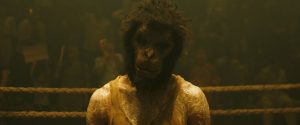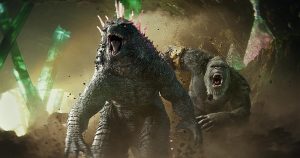Reviews include Civil War, In Flames, and The Greatest Hits.
TFCA Friday: Week of May 19
May 19, 2023

Welcome to TFCA Friday, a weekly round-up of film reviews and articles by TFCA members.
In Release this Week!
Bayi Ajaib (dir. Rako Prijanto)
“Plenty of Indonesian folklore,” notes Gilbert Seah at Afro Toronto. “Director Pronto films often in the blackness of night. The film possesses a great atmosphere of dread, horror and fright in an Indonesian superstitious village setting.”
Dark Nature (dir. Berkley Brady 🇨🇦)
“When it comes to gore, Dark Nature definitely delivers, especially towards the last third of the film when it becomes a true survival film,” notes Rachel West at the Alliance of Women Film Journalists. “The Swamp Thing-esque creature is a gory delight and it’s quite refreshing to see a literal monster show up. It makes nice albeit safe comparison to the very human-like monsters the women have confronted, especially Joy. The abuse Joy endures at the hands of her controlling partner Derek (Daniel Arnold) is harrowing. The gradual escalation of his abuse over a short amount of time feels as authentic as the film’s cave-dwelling monster.”
“The first half of director Brady’s movie is pretty good. There is a solid sense of horror and evil lurking and one can never tell what really is happening,” says Gilbert Seah at Afro Toronto. “The mystery and beauty of the Canadian Rockies add to the conflict of Joy’s feelings. The girls in the mysterious mountains is reminiscent of the Australian classic horror by Peter Weir, Picnic at Hanging Rock (1975).”
The Eight Mountains (dir. Felix van Groeningen and Charlotte Vandermeersch)
At Afro Toronto, Gilbert Seah calls it “a slow but captivating epic journey of friendship and self-discovery set in the breathtaking Italian Alps.”
“The Eight Mountains will rip your heart out. Told simply, with the Italian Alps a looming, breathtaking presence, follows a friendship between two men over forty years,” writes Anne Brodie at What She Said. “The mysteries, joys, and sorrows of comradeship play out in their magical mountain world which by now feels like home to us. Gorgeous, profound, and natural as the day is long Kudos to the actors, Alessandro Borghi and Luca Marinelli, the adult Bruno, and Pietro and Cristiano Sassella and Lupo Barbiero, the boys, the director and the Alps!”
“Visually, the filmmakers employ the old-fashioned squarish Academy ratio, emphasizing the vertical dimension of the mountain setting: The effect is to remind us that mountains aren’t just vistas to admire, but also enclosing walls to scale,” notes Liam Lacey at Original Cin. “Its weakness is a tendency toward grandiosity, treating an anecdotal drama as though it were an epic.”
Faithfully Yours (dir. André van Duren)
At Afro Toronto, Gilbert Seah calls it “a well written taut little mystery Dutch thriller about lies, deception and murder that holds attention for start to finish.”
Fanfic (dir. Marta Karwowska)
“[The] film can be praised for the honest portrayal of the emotions teens go through when they question their sexuality, what trans and homosexuality mean or otherwise,” notes Gilbert Seah at Afro Toronto.
Fast X (dir. Louis Leterrier)
“The question that a new F&F chapter must answer, then, is whether it can pull off all that violent sexy nonsense with a renewed sense of energy, vigour, inventiveness and more self-aware ridiculousness than the instalment before it. This is not a movie requiring discipline, but out-of-control relentlessness. Go crazy, or go home, bro,” revs Barry Hertz at The Globe and Mail. “As the Marvel Cinematic Universe sputters and Star Wars can’t seem to get its act together on the big screen, F&F is a kind of blockbuster balm. You can choose your friends, and you can choose your enemies. But you can’t choose your family. If you’re already with Dom and his brood, you’re with them for life. Ride or die.”
Also at The Globe and Mail, Barry Hertz marks the occasion of the franchise turning things up to eleven by ranking all the Fast and the Furii flicks. At the top: Fast Five. “Five sequels, one spinoff and a whole pandemic later, there still isn’t a better F&F movie than Justin Lin’s action masterpiece,” notes Hertz. “After Lin took over the Fast brand with the third entry, Tokyo Drift, a once-disposable street-racing series swerved into blockbuster territory. Lin has helmed five and a half F&F entries (including starting, but then abandoning, Fast X), making him the series’ shepherd as much as Diesel. But Five is truly his masterpiece, a bonkers bonanza of vehicular destruction that is pure popcorn lunacy.”
“[T]here are stunts galore, which start at the level of the impossible and just get crazier. It’s not just that the actions of the cars – flipping end over end, pulling helicopters of the sky, surviving a bomb’s shock wave through a combination of horsepower and willpower – are bonkers. It’s the image of Dom or one of his crew glancing in the side mirror and concluding: ‘Yeah, I could crash this car into that one, blowing up a third while stopping a fourth and killing no one,” – all with the casual nonchalance with which we mortals might merely merge into traffic,’ says Chris Knight at the National Post. “Fast X offers such giddy, goofball enjoyment, I’d gladly return for two more if they can keep the energy flowing.”
“Like a flaming neutron bomb careening through the streets of Rome, the Fast and Furious films have an unstoppable momentum. What were once somewhat simple stories about street racing have now transcended the qualifiers of good and bad,” observes Eli Glasner at CBC. “If anything, the Fast and Furious films have reached the point where they all take things a little too seriously. The giant metal bomb smashing the steps of Rome isn’t just an engine of chaos, it’s a callback to Fast Five. Meanwhile, without Dominic as the crew’s anchor, the bickering between Roman and Tej quickly loses its charm, and yet is extended with a side quest to London and a surprising but ultimately pointless cameo.”
“I’m not quite sure what universe the Fast and Furious characters exist in. I used to know back when the first film gave off the sheen of an 80s cop film. I don’t recognize the world they currently exist in where ultra-secret headquarters house cells with mammoth stoned clawed gates, and multi-armed laser guns, and oversized satellite shaped bombs. But then again, I’m not really a car person,” admits Thom Ernst at Original Cin. “But the willingness to suspend disbelief is beginning to reach an apex. The excess is more watchable than inventive.”
“One would think that films would have been done with sexist scenes such as the scantily clad girls posing with the fast exotic cars,” admits Gilbert Seah at Afro Toronto. “If FAST X, a total mish-mash of action special effect sequences hastily put together without thought of narrative, continuity or meaning is the future of film, then moviegoers have not much to look forward to.”
Insanity (dir. Wendy Hill-Tout 🇨🇦)
“The Hill-Tout family’s experience with mental illness is Insanity’s narrative anchor. As the director tries to find her missing brother — his absent character played by actor Brandon Dewyn in a novel if occasionally startling device — she surveys mental illness’s devastating impact on society, past and present, talking with doctors, researchers, and most potently, other families facing the same problem,” notes Kim Hughes at Original Cin. “It’s debatable whether the unfussy but sincerely moving Insanity will bring about much societal change. But it is certain to arouse compassion for the people we encounter daily living unimaginably hard lives that could be vastly improved if only the will to help them could be sufficiently corralled.”
“Insanity views the escalating mental health crisis in North America through a personal lens. Hill-Tout connects with her siblings and father to remember Bruce and look back at the signs they missed,” writes Pat Mullen at POV Magazine. “Along the way, Hill-Tout narrates the film and reflects on the need to provide adequate support. She makes clear, cogent points through a personal lens, although using words like ‘crazy’ and ‘insane’ as pejoratives in a film about mental health is an odd choice, even if she’s reflecting upon the state of care. Nevertheless, the sentiment echoes how services that governments provide are disconnected from the real need for care.”
It’s Quieter in the Twilight (dir. Billy Miossi)
“The Voyager program is covered in detail and is tremendously intriguing,” observes Gilbert Seah at Afro Toronto.
Master Gardener (dir. Paul Schrader)
“As the tale turns from gardening to macho chaos, Weaver pretty much vanishes from the narrative and Quintessa Swindell subs in, with her drugs ’n’ thugs back story taking over. This is the point at which Master Gardener goes right off the rails, and the remaining action and blooming love story involve dodgy editing and an unpleasant whiff of old-man-fever-dream,” writes Liz Braun at Original Cin. “Every audience, however, is expected to believe that tattoo removal is all that stands in the way of a wildly unlikely May-December romance that comes out of nowhere, lacks chemistry, and looks bad — in a midlife crisis kind of way — on the guy who wrote it.”
“Master Gardener is a Schrader film through and through,” observes Marc Glassman at Classical FM. “played by the rugged Australian actor Joel Edgerton, Roth knows that his staff have a healthy respect for him and but it’s clear that he isn’t open to them as friends. His one relationship is with Norma Haverhill, the wealthy owner of the gardens and the huge estate that surrounds it. Haverhill is brilliantly performed by Sigourney Weaver as a willful aristocrat, who always gets her way.”
“The film takes us on a huge U-turn and becomes something altogether different,” notes Anne Brodie at What She Said. “But all roads lead back to Gracewood. Interesting, provocative, odd and dark, typical of Schrader’s work, but I wanted it to stay about gardening, learning, and his eloquent passion.”
“Like many of his films, Master Gardener is a complex and layered thing that is sturdily resistant to quick, dirty, in-and-out discourse. In its ideas and execution, it has the weight of a million Facebook posts,” observes Barry Hertz at The Globe and Mail, comparing it to Schrader’s notorious online rants. “Muted in tone and stylized with the kind of zero-frills aesthetic that has marked Schrader’s recent work, Master Gardener is not a remotely slick or smooth ride…But in Schrader’s strong, meditative hands, everything gels together to create an entrancing work that is serious and, very nearly, profound.”
A New Old Play (dir. Qiu Jiongjiong)
“A New Old Play, though not a bad film will be a hard sell to Canadian audiences as it is overlong and deals with a subject unfamiliar and likely uninteresting i.e. Sichuan opera,” writes Gilbert Seah at Afro Toronto.
Retrograde (dir. Adrian Murray 🇨🇦)
“Canadian film Retrograde from Adrian Murray and starring Molly Reisman follows a young woman who has recently split from her boyfriend and lives with roommates. Molly’s not very good at her job. She lands in the emotional soup when she’s pulled over for careless driving. She argues with the officer and for her troubles gets a $300 ticket. She alleges innocence – we don’t see what happened – and what she sees as unfairness overtakes her,” writes Anne Brodie at What She Said. “Molly’s increasing bitterness has consequences as she discovers, and her anxiety and fake confidence go into high gear. Murray’s unsympathetic lead is exhausting and indefatigable, and worse, reflects us back to ourselves in our worst, quixotic moments.”
“Reisman is great as Molly. She is undoubtedly the type of twenty-something Torontonian that many readers will recognize, either in themselves or friends,” says Rachel West at That Shelf. “An insufferable person made to suffer, the passive-aggressive Molly loses any sympathy she may have earned from her friends and the audience in a matter of minutes. The naturalistic performance from Reisman and the cast fit perfectly with Murray’s purposefully tedious narrative. Molly is a fully rounded and complex character who presents a challenge upon viewing: We don’t have to like her or agree with her to care where her journey takes her. Sure, she’s anxious and obnoxious, but her feelings and lived reality are valid.”
“The film lasts just 74 minutes, but it stretches that time out, in long, stationary and carefully blocked takes, with naturalistic performances and dialogue, lightly sprinkled with irony,” says Liam Lacey at Original Cin. “The time-suck of dealing with bureaucracy feels palpable: Molly types out earnest emails to the court officials and waits for responses.”
The Starling Girl (dir. Laurel Parmet)
“The Starling Girl is a gently told tale of repression challenged by desire and instinct,” writes Thom Ernst at Original Cin. “Abrams performs Ben with slouch indifference, and a complete inability to communicate on any level that could be deemed interesting, much less romantic. But unfortunately, Ben is a secondary character, yet he’s one that goes through the film’s biggest transformation.”
What’s Love Got to Do with It? (dir. Shekhar Kapur)
“Director Shekhar Kapur (Elizabeth, Science of Compassion) keeps the overall tone light if sometimes a bit melodramatic. He has cast well and relies on his lead actors to inhabit the emotional contradictions, worries and changes that their characters are experiencing, which both do beautifully,” notes Karen Gordon at Original Cin. “So, yeah, the movie does noticeably follow the formula. But still, it got to me. I rooted for the couple who didn’t yet know what we knew from the beginning, and I even welled up towards the end, just when the film wanted me to. Predictable reaction. But then, it’s a rom com after all.”
“Family machinations requiring everyone to do the traditional thing have dire consequences and everyone seems doomed to be unhappy. Kaz marries, his bride cries, and Zoe’s confused. Some great zingers are launched, and spot-on social commentary,” observes Anne Brodie at What She Said. “Zoe investigating freezing her eggs for later tells the technician ‘I don’t have to put all my eggs in one bastard.’ So what are two families to do? It’s a mess but by now we care about Kaz and Zoe. How many hearts will be broken?”
“Despite a few innovative additions to the romantic comedy genre, such as the incorporation of Pakistani culture and vibrant Bollywood-style dance sequences shot in Lahore, Pakistan, the film falls into the familiar tropes of Harlequin romance, ultimately becoming totally predictable,” sighs Gilbert Seah at Afro Toronto.
“What’s Love Got to do With It? shows true understanding when the intricacies of Pakistan culture are discussed, which makes sense given her life. Unfortunately, it follows the rules of the Hollywood romantic comedy, trying hard to be inoffensive to every potential audience member,” says Marc Glassman at Classical FM. “It’s a good film when it could have been great. We never find out what Maymouna’s clearly crazy life in Lahore is all about and who her real lover is—items that would be fascinating. Nor do we delve into the marriage of the Khan’s estranged daughter; instead, there’s an emotional reconciliation.”
“James makes an appealing romantic lead, but much of the dramatic weight falls on Latif, who meets the challenge. The actors also have magnetic chemistry, which should make audiences swoon,” writes Pat Mullen at That Shelf. “The film has the spark of two people in love and the actors elevate rom-com convention as Zoe and Kaz gaze longingly at each other, wondering about their fairytale ending. They’re such a good match that one can easily forgive the predictable finale. It is, appropriately, a film that’s hard not to love.”
File Under Miscellaneous
At The Globe and Mail, Barry Hertz kicks off summer movie season by looking at the most popcorn worthy big screen, big-budget flicks like Barbie: “The most anticipated movie about dolls since Russ Meyer first explored the valley, Greta Gerwig’s Mattel-approved meta-comedy might be a genius stroke of merchandise-cinema, à la The Lego Movie,” writes Hertz. “Or it could be a Ken-brained scheme to spend hundreds of millions of Warner Bros. intellectual-property rights. Either way, with Gerwig’s sterling reputation for high-brow comedy, a sprawling cast of superstars (Margot Robbie, Ryan Gosling, Simu Liu, Will Ferrell) and enough pink to drown Paris Hilton five times over, Barbie has the makings of a must-see megaevent.”
At POV Magazine, Pat Mullen speaks with the filmmaking duo of Ryan Emracora and Jessica Johnson about their feature debut Anyox, durational cinema, and the power of the long take. “When you look at early cinema, it’s not always based on storytelling,” says Ermacora. “Sometimes it’s just a depiction of a form of labour, like a shot of labour until the film roll runs out. Or it would be a train ride. There are many examples of early cinema experiments that don’t tell a story per se. When we studied film history, people often talked about how early cinema was wedded to photography or theater and it needed to find its own language. We’re interested in staying in that early area of exploration. We find it a fruitful area to explore and create immersive films that are rooted in structure as opposed to rooted in a story arc.”
At POV Magazine, Pat Mullen explores the auteur-driven documentary streamer Tënk and chats with co-directors Florence Lamothe and Naomie Décarie-Daigneault about what sets them apart in a crowded market. “We don’t start from the same understanding point as a documentary platform,” says Lamothe. “People talk about how there are more and more documentaries, but there’s more than the formatted documentaries on other platforms. Sometimes we have to do some educating about the type of film we want to defend.”
A Festival of Festival Coverage: Cannes Returns with l’Amour Fou
At the Toronto Star, Peter Howell looks at the star-studded return of Cannes, which features plenty of Canadian content, including Tantoo Cardinal in Martin Scorsese’s Killers of the Flower Moon. “Scorsese, I suspect, is a wizard. I appreciate that he took this story on,” Cardinal tells Howell. “I look forward to what he has done with it. I appreciated working with Scorsese and the fabulous Osage folks who were involved with the production.” Howell also looks at some of the complicated love stories making a splash on the Croisette, like Monia Chokri’s The Nature of Love. “If there’s one constant in these films and others at Cannes ’23, it’s that love and romance are unpredictable and potentially explosive,” writes Howell. He also reports on the return of Johnny Depp, who kicked off the fest with a controversial opening night. “Despite being close to retirement age, and looking every bit his age, Depp has no apparent desire to quit acting and no need to do so,” notes Howell. “He still draws a crowd, a benefit enjoyed by other big stars expected in Cannes before the fest ends on May 27.”
At What She Said, Anne Brodie previews Inside Out LGBTQ Film Festival, which opens with Passages and features highlights like KOKOMO CITY, Golden Delicious, Supporting Our Selves, and Glitter and Doom.
TV Talk/Series Scribbles: Femme Fatales and Exotic Adventures
At The Globe and Mail, Johanna Schneller looks at the reboot series Obsession and Fatal Attraction, and dives into why the femme fatale trope needs to go the way of the dinosaurs: “Supporting characters in both series yammer about the overwhelming number of crimes against women, and how privileged white dudes think they can do whatever they want and get away with it, and how people who are struggling with their mental health should not be described as evil,” writes Schneller. “But injecting 2023 talking points doesn’t fix the problem inherent in both shows, which is that they remain utterly devoted to and dependent on the trope of the femme fatale, the black widow who binds her victims and renders them helpless, the praying mantis who bites off her mates’ heads when she’s through with them.”
At What She Said, Anne Brodie stamps her streaming passport with Ghosts of Beirut: “The series is a shocker and shows ways in which these early events evolved to change war and intelligence in the Middle East.” She’s actually playing double-agent by also reviewing the espionage series Spy/Master: “Packed with information, double-crosses, and head-spinning plot twists, all under the frigid environment of post-war Europe.” For something on the lighter side, though, there’s Wanda Sykes’ latest stand-up special: “The woman’s a keen observer and translator and we’re looking forward to her next special.”



